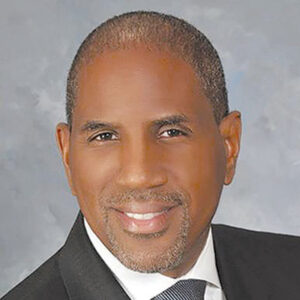 Our nation has been embroiled in much debate, discourse, and even discord about the state of public education. The executive actions to dismantle the United States Department of Education (USDOE) have caused concern among educators, policy makers, parents, and in some cases, even students. During my nearly 40 years in education, I have always taken a somewhat agnostic view of the role that the federal government played in the funding of public education. In fact, according to data from the National Center for Education Statistics, this accounts for about 11 percent of total elementary and secondary public school revenue. However, this figure may vary significantly in certain states, underscoring the potential risks of such policy shifts. For example, in Florida, federal funds result in approximately an additional $2,300 per student whereas in North Dakota it results in $3,990 per student funding enhancement.
Our nation has been embroiled in much debate, discourse, and even discord about the state of public education. The executive actions to dismantle the United States Department of Education (USDOE) have caused concern among educators, policy makers, parents, and in some cases, even students. During my nearly 40 years in education, I have always taken a somewhat agnostic view of the role that the federal government played in the funding of public education. In fact, according to data from the National Center for Education Statistics, this accounts for about 11 percent of total elementary and secondary public school revenue. However, this figure may vary significantly in certain states, underscoring the potential risks of such policy shifts. For example, in Florida, federal funds result in approximately an additional $2,300 per student whereas in North Dakota it results in $3,990 per student funding enhancement.
Although concerns regarding funding have dominated, the impact goes well beyond that.
The original Education Department was created to collect information to create effective school systems. It was understood that although not specifically mentioned in the Constitution– and as such, left to the states, education would play a role in the growth of the United States.
Later established by Congress, the USDOE, in my assessment, assumed three critical roles: to provide, protect, and enforce. Resources for special needs, poor, homeless, English Language Learners, and college bound students has been an essential function. These additional supports provided a bridge of equity and opportunity. The USDOE has also played a significant role in the protection of rights that are guaranteed by federal law. Protecting the rights of special needs, female, and immigrant student populations have provided requisite guardrails to ensure the promises made by the “Framers” and through amendments to the Constitution.
A final function of the USDOE has been the enforcement of federal law. In Brown v. Board of Education, the federal government assumed an enforcement role for Southern states that refused to integrate its schools. While Americans mostly cheered, many white Southerners decried it—viewing it as “a day of catastrophe” akin to Pearl Harbor. Resistance was captured in the image of 6-year old Ruby Bridges being escorted to school by federal marshals.
The USDOE continues to play a major role in ensuring that children have a fair shot at the American Dream. These resources help ensure assistance and support for poor, special needs, and immigrant student populations. Miami-Dade County Public Schools alone was allocated an additional $330 million dollars to support legislatively approved programs.
Any intimation or notion that these funds help to support “those children” in “those schools” and not “all children” in “all schools” would be a grave miscalculation of federal funding.
Any dismantling of the USDOE that would disrupt critical funding streams would be catastrophic to the learning, and ultimately the lives of children—in every school—in every zip code.
From Florida City to Countyline Road.
Dr. Steve Gallon III is school board member for District 1. He has served as a teacher, principal, and superintendent, and is the former vice-chair of the Miami-Dade County Public Schools.





